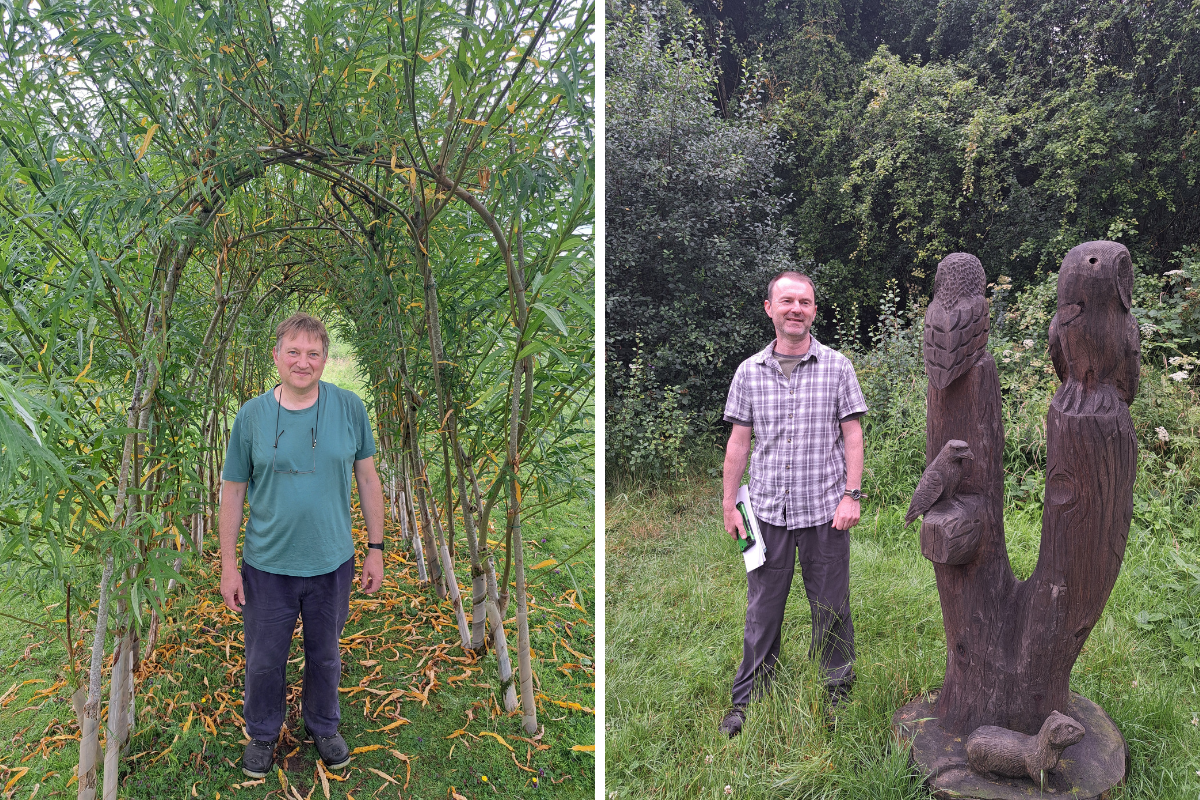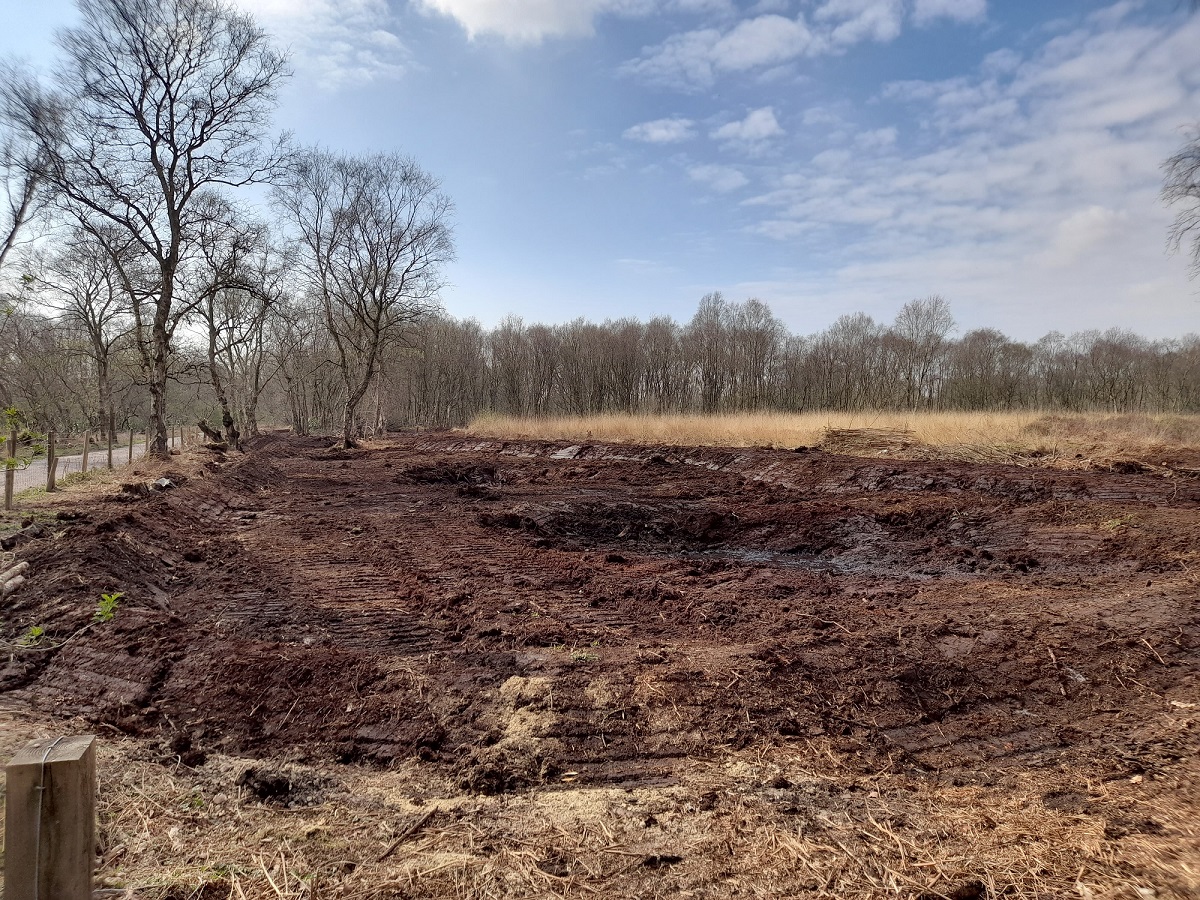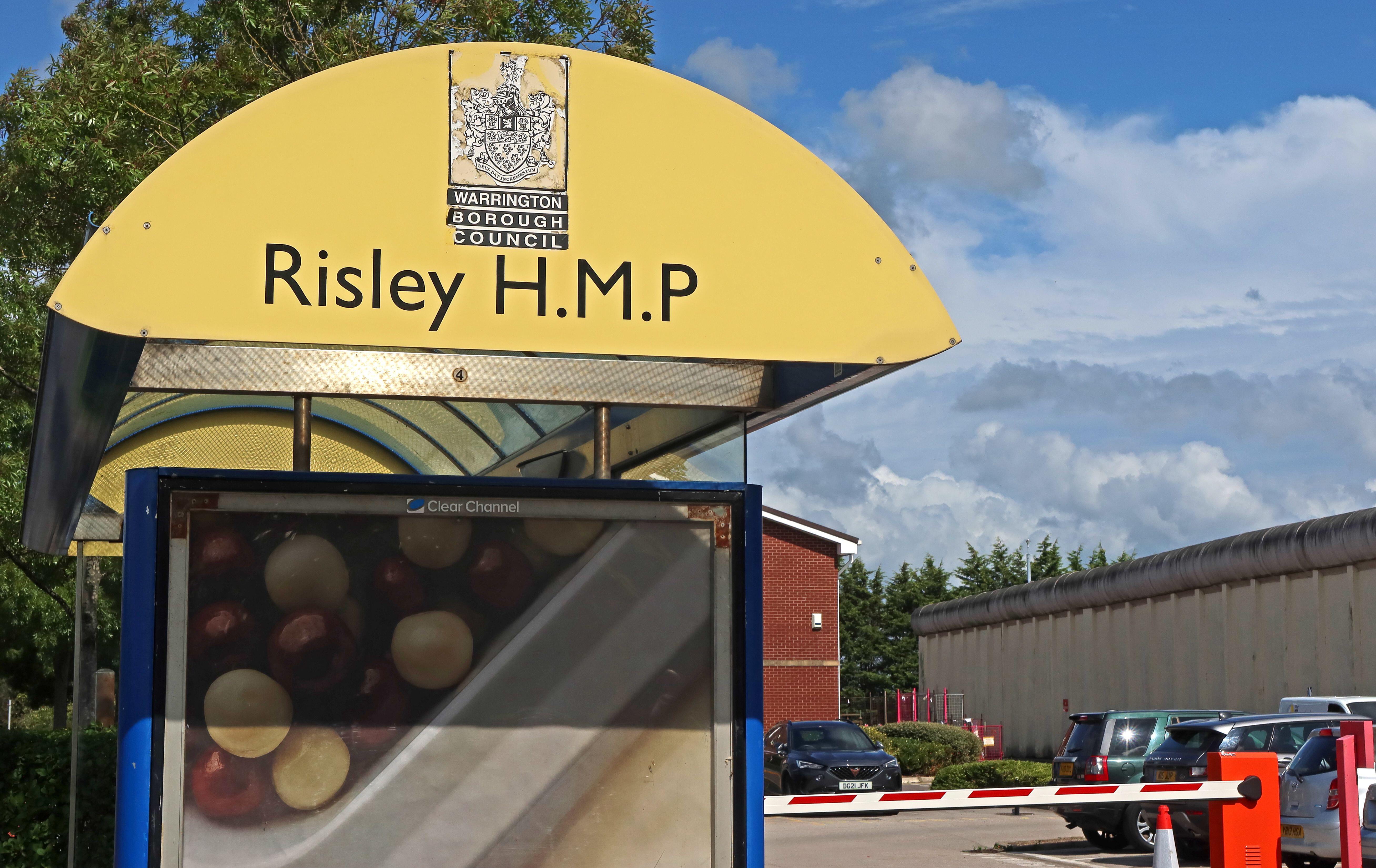Tiny piece of land next to M62 with climate-critical significance
Peatlands are disappearing at an alarming rate - so Pestfurlong Moss has enormous importance in our eco-system.
Nigel Balding is hoping to glimpse a rare marsh orchid amid the wild flowers on the path to Pestfurlong Moss, but it’s probably a couple of weeks too late. Overhead a sparrowhawk and a magpie squabble in mid-flight, presumably over rights to the recently deceased pigeon below on the ground. It’s easy to forget the M62 is only metres away.
The lowland raised peat bog is only a tiny bit of land, about 0.4 hectares, sat between the housing of Gorse Covert in Birchwood and junction 11 of the motorway. But with the country’s climate-critical peatlands having disappeared at an alarming rate, Pestfurlong Moss’s significance way exceeds its size. Until its restoration, it was in danger of disappearing.
Pausing at the top of a slope that could only really be called a hill in somewhere as flat as Warrington, Balding, chair of Friends of Gorse Covert Mounds, points through a sightline created among the trees towards Winter Hill 15 miles away north east, where upland peatlands were also under threat, most recently from the wildfires of 2018.
Then it’s down the path, past the willow tree tunnels, and on to the bog proper. I soon regret not bringing wellies and shortly afterwards even site manager Neil Oxley of the Woodland Trust suggests we’ve gone far enough if we’re to stay dry. That’s the mark of the restoration’s rewetting success.
In truth, Pestfurlong Moss isn’t the most glamorous countryside, even though it dates back 10,000 years to the ending of the last ice age. When the writer Daniel Defoe visited similar land at Chat Moss in Salford in 1724, he wrote: “the surface at a distance looks black and dirty and frightful to think of, for it will bear neither horse nor man… what nature meant by such a useless production, ’tis hard to imagine, but the land is entirely to waste”.
Lowland bogland sites were “just seen as unmanaged, unkept, sort of waste areas and not particularly valuable, but the opposite is true”, says Oxley. “It’s a really valuable habitat for wildlife.”
Peatlands of all altitudes are also among the most carbon-rich ecosystems on the planet, their wet conditions preventing plants from fully decomposing and therefore limiting the amount of CO2 released into the atmosphere. According to the UK Centre for Ecology and Hydrology, they lock in an estimated 3.2 billion tonnes of CO2 in the UK. Defoe might not have lamented their loss but the planet does.
Before the Industrial Revolution lowland peat extraction was confined mainly to local fuel use. But then the peatlands were drained to make way for railways and highly fertile agricultural land. Then came commercial extraction for energy and horticulture, and later, in Warrington’s case, a huge Second World War munitions site that needed draining.
Forestry England estimates that at least 80 per cent of the country’s peatland habitats have been lost or damaged. When they dry out they release carbon back into the atmosphere and bog-loving plants and animals disappear. Nor can they absorb further carbon.
Pestfurlong Moss and the wider Gorse Covert Mounds in which it sits were given to the Woodland Trust by the Warrington and Runcorn New Town Development Corporation in 1995. Previously they’d been owned by a farmer, who was defeated in trying to drain Pestfurlong Moss by building a big ditch. It was just too boggy.
With pressure on budgets and priorities on bigger sites, the Woodland Trust’s management had to be largely passive at first. Around 15 years ago local resident Balding was persuaded by a friend to lead the formalisation of a group who met in the Poacher pub into Friends of Gorse Covert Mounds – by which time he’d seen how the drying out was accelerating.
He’d had some volunteering experience at the much bigger Risley Moss site nearby.
"I realised that Pestfurlong Moss was regressing to woodland and that work being done at Risley Moss could be applied to it, thus saving the moss,” says Balding.
“My other concern was safety. There had been fires on the moss, because it was drying out and because it's peat-based, and we're really close to the M62 so with a south-westerly wind and a peatland fire it could have been serious.
“There were lots of reasons to get on with it, so we started doing some volunteer days as part of our annual programme, and then opportunities arose to find more people to help.”
In 2017 came the Carbon Landscape Project, which had Heritage Fund money to restore sites including the Wigan and Leigh flashes, the mosslands of Wigan, Salford and Warrington, and the Mersey wetlands corridor. The Woodland Trust and Friends of Gorse Coverts Mounds could get to some serious work at Pestfurlong Moss.
First came 30 plastic piling and peat dam structures, and a 140m Plygene and peat bund to prevent water loss and rewet the mossland.
“We changed the access point with trees, and put in steps to go down. That diverted people off the main part of the moss and on to the side, limiting damage and allowing more of the site to regenerate,” adds Oxley.
Balding knew from Risley Moss that they had to take out the birch trees and the volunteers took wheelbarrows to the site containing hand tools like mattocks and loppers to do the work. “But the Woodland Trust led it from a technical point of view,” he says.
Purple moor grass soon started to grow, but it was just a start. A carpet of all-important sphagnum – peat-forming moss – formed over the replenished pools. Hare’s-tail and common cotton grass and cross leaved heath were planted across the site.

Nigel Balding and Neil Oxley
As I was setting out for Pestfurlong Moss, my step-daughter phoned from London, upset.
She’s been enjoying watching a heron on her walks along the canal to work this year, but she’s just seen it dead on a path, cause unknown. Oxley spots big flapping wings above and, sure enough, it’s a heron, and we walk round to see it retreating into some trees behind a pond, possibly nesting.
Maybe it feeds on the dragonflies, of which there are now 10 species. There are four species of bats, more sensed than seen by participants on the guided night-time bat walks Balding’s group has organised. The great-crested newt, that rarely seen symbol of planning battles everywhere, is there.
One of Britain’s fastest-declining resident birds, the willow tit, has been spotted on Pestfurlong Moss – although attempts to get it to breed haven’t been successful yet – and one of the country’s rarest trees, the black poplar, has been planted.
Black poplars, which can live to 200 years, were once so commonplace across the north they were known as Manchester poplars, but many died from pollution in the Industrial Revolution. There are now only around 7,000 wild black poplars in Britain due to an airborne fungus, and only 600 female trees, according to Salford University researchers.
The planting was led by the friends group. Balding saw that Chester Zoo had a project to propagate from identified clones of both sexes and got in touch. Pestfurlong Moss is now home to six cuttings, male and female.
Carbon Landscape’s report on the major restoration work, which ended in 2019, talks of the project having “significantly overachieved its targets”. And although it’s a small site, Pestfurlong Moss functions like the M62 – as an important transport link, connecting wildlife and plants to the bigger sites of Manchester Mosses Special Areas of Conservation, including nearby Risley Moss and Holcroft Moss.
According to Paul Thomas of Natural England, these are of international significance but cannot exist in isolation. “They need to be connected for species to have a sustainable future. The rewetting of Pestfurlong is an important stepping stone. It is almost like an insurance policy.”
But Pestfurlong Moss differs from Risley Moss and Holcroft Moss in one important way. Because of their international significance, they cannot be fully open to the public. Pestfurlong Moss is.
In the late morning, dog walkers are as rare as marsh orchids but there is more footfall and paw-fall in the early morning, lunchtimes and evenings.
“The beauty of Pestfurlong Moss is that it's a micro version of Risley Moss,” says Oxley.
“But you can actually walk down onto it and around it. You get really close up, whether it's to dragonflies or insects or whatever it might be.”
Maintaining that access while protecting the area requires some canny management on the part of both the Woodland Trust and Friends of Gorse Covert Mounds. There are occasional problems with kids on motorbikes or camping, or people fishing where they shouldn’t be – but not many. Litter needs collecting.
The well-meaning visitor might wonder why there are no litter bins on the site’s perimeter but the experts know better – that people miss bins when they chuck dog poo away and the bins need someone to regularly empty them. Instead, the idea is that if you can carry it on, you can carry it off.
Balding is proud that the efforts of volunteers mean there is virtually no litter visible on our visit. Pestfurlong Moss is never going to attract many nature-lovers from afar – it’s more about local usage. As well as the dog walkers, he says there are runners and people just going for a lunchtime stroll.
"I think things have changed since Covid and anecdotally I would say people have connected a bit more with nature and do value their walks a little bit more,” says Balding.
“People are working from home more and if you live in Gorse Covert you can go out for a walk in a way you probably couldn’t before.”
If the major restoration work is complete, there is work to do. For Friends of Gorse Covert Mounds that means much more than litter picking.
Water can leak from around the site, invasive Himalayan balsam needs to be cleared.
Recording and monitoring is crucial. Among the group are people with expertise on bats
and dragonflies, and if they can feed information about flourishing species back to funders, it’s a way of proving the worth of Pestfurlong Moss and attracting further funding.
Balding, who was leader of the Conservative opposition on Warrington Council until May, says the group can also be a channel for local people’s concerns over planning.
A new motorway service station has received planning approval for a spot just across the M62 in the Winter Hill skyline – despite there already being two service stations nearby.
Northern readers might remember something called HS2, which was also going to run through the area and had its own planning battles.

Pestfurlong Moss - Credit: Woodland Trust
“Somebody wanted to create a play pigeon shooting club really close by and we felt that that would disturb the wildlife,” says Balding. “We've had planning applications for micro generation sites of diesel and then gas.
“If we have an active community group we can help support and protect the site going forward – that’s another big role. Residents’ voices are important from a politics point of view.”
Deep into the bog, there are some more vicious insects than dragonflies. I reassure the other two that I will be bitten first and more often. Oxley says the same about himself. Sitting down later to write this, I’m fairly sure I was right. It’s time for the visit to end.
Oxley says that some funding for Pestfurlong Moss also came from the Landfill Tax and from Defra. It can sometimes be a frustration to be constantly pulling together a patchwork of funding but this one was smooth.
“With the Carbon Landscape and the Wildlife Trust and Natural England and Warrington Council, who were involved, it worked very well,” he says.
“The funding didn't come easily. Obviously you have to apply for things and do all the necessary applications and convince them you need the money and why. But having those partners on board, I think it helped.
“I don't think I said how grateful we are for Nigel and the friends group’s involvement because having that community involvement is key nowadays. I mean, it always should be, but, particularly for funding, you need to demonstrate that the local community are on board.
“It's been very beneficial to have the partnership and the local community involvement.”
The Lead is now on Substack.
Become a Member, and get our most groundbreaking content first. Become a Founder, and join the newsroom’s internal conversation - meet the writers, the editors and more.





